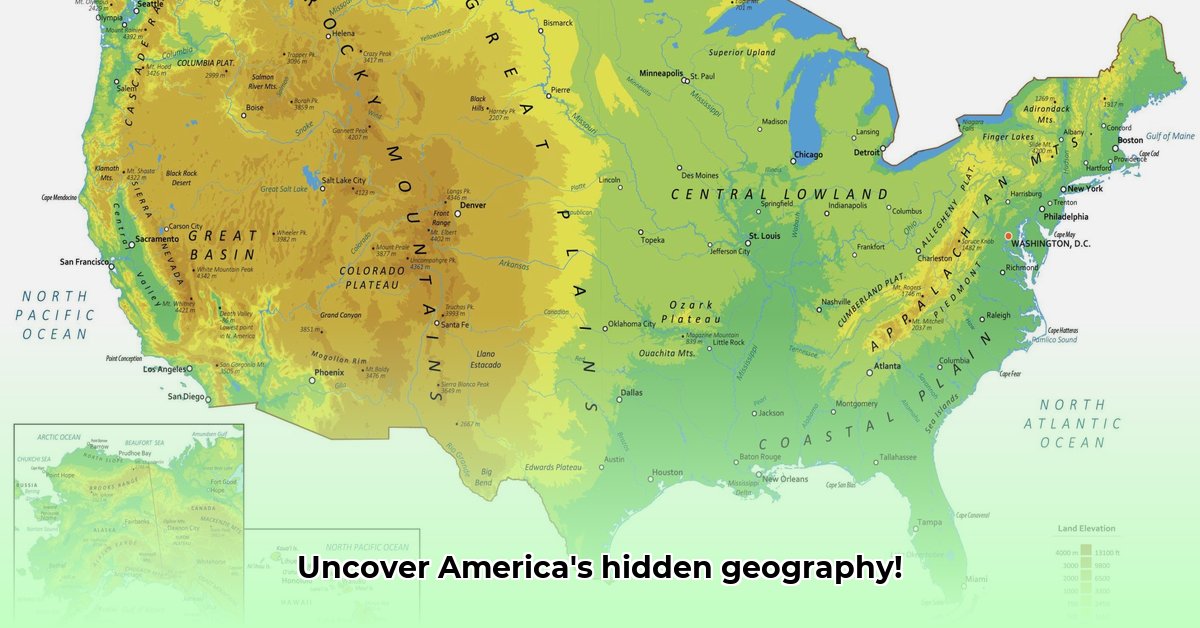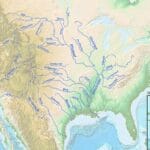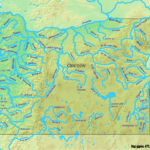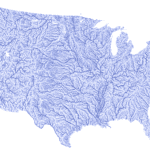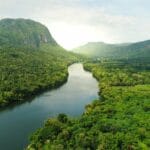A Journey Through Mountains, Plains, and Waterways
The United States presents a breathtaking tapestry of geographical features, ranging from the majestic peaks of the Rocky Mountains to the expansive Great Plains and intricate network of rivers and lakes. This diverse landscape has shaped not only the nation’s physical character but also its history, culture, and economy. Understanding these diverse landscapes is essential for environmental stewardship, sustainable development, resource management, and appreciating the natural wonders this country holds. Learn more about the longest river in the US.
Mountain Majesty: Rockies, Appalachians, and Beyond
The Rocky Mountains, a colossal spine running through the western United States, create a dramatic backdrop for a variety of ecosystems. From lush coniferous forests at lower elevations to alpine meadows and barren peaks above the treeline, these mountains support a rich array of plant and animal life. The Rockies also play a critical role in shaping weather patterns and water resources across the western states. Their influence extends far beyond their imposing physical presence, impacting agriculture, urban development, and recreational opportunities. The Appalachian Mountains, an older and more eroded range in the east, tell a different story. These ancient peaks, once formidable barriers to westward expansion, have shaped settlement patterns and continue to influence the region’s cultural identity. Beyond these iconic ranges, other significant mountainous regions, such as the Sierra Nevada, Cascades, and Adirondacks, contribute to the nation’s ecological and geological diversity. These ranges offer unique habitats, recreational opportunities, and crucial watershed areas, highlighting the interconnectedness of geography and human activity.
Plains and Plateaus: The Heart of Agricultural America
The Great Plains, a vast expanse of grasslands stretching across the central United States, offer a stark contrast to the rugged terrain of the mountains. This fertile region, often referred to as the “breadbasket of America,” plays a vital role in the nation’s agricultural production. The rich soils and relatively flat terrain make it ideal for cultivating crops like wheat, corn, and soybeans, feeding millions both domestically and internationally. The high plateaus of the Southwest, including the Colorado Plateau, present a completely different landscape. Characterized by deep canyons, mesas, and buttes carved by millennia of erosion, these regions offer a glimpse into the powerful forces that have shaped the Earth’s surface. The unique geology and arid climate of these plateaus support specialized plant and animal communities, adding to the nation’s biodiversity.
Rivers and Lakes: Shaping Commerce and Ecosystems
The Mississippi River system, a vast network of interconnected waterways, has played a pivotal role in the nation’s history and development. From its headwaters in Minnesota to its delta in Louisiana, the Mississippi has served as a vital transportation route, facilitating trade and commerce for centuries. Its tributaries, including the Missouri and Ohio rivers, extend its reach even further, connecting communities and shaping the economic landscape. The Great Lakes, a collection of five massive freshwater lakes bordering the United States and Canada, represent another crucial water resource. These lakes influence regional climate, support diverse ecosystems, and provide essential water for industry, agriculture, and human consumption. Understanding the complex interplay of these interconnected water systems is crucial for managing resources and mitigating the impacts of climate change.
Coastal Dynamics: Where Land Meets Sea
The diverse coastlines of the United States, from the rugged shores of New England to the sandy beaches of Florida and the dramatic cliffs of the Pacific coast, each tell a unique story of geological processes and human interaction. Ocean currents, tides, erosion, and human development have all played a role in shaping these dynamic environments. Coastal regions are not only important for commerce and recreation but also serve as critical habitats for a variety of species. Protecting these fragile ecosystems in the face of rising sea levels and increasing development pressures is a significant challenge.
Regional Gems: Exploring Unique Landscapes
The United States boasts a remarkable array of unique landscapes, each with its own distinct characteristics. Death Valley, the hottest, driest, and lowest national park, offers a glimpse into the extremes of nature. The Great Salt Lake, a remnant of an ancient inland sea, showcases the fascinating interplay of geology and hydrology. The Sierra Nevada, with its towering granite peaks, alpine meadows, and giant sequoia trees, provides a stunning example of the diversity within a single mountain range. These and other regional gems contribute to the rich tapestry of American geography and offer opportunities for scientific exploration, recreation, and conservation.
Applying Geographical Knowledge for a Sustainable Future
Understanding the US physical map is not merely an academic pursuit; it has practical applications across a wide range of disciplines. Environmental scientists use this knowledge to study ecosystems, track changes, and develop conservation strategies. Urban planners and infrastructure developers utilize geographical data to design sustainable communities and transportation networks. Resource managers rely on this information to make informed decisions about resource extraction and land use. By integrating geographical knowledge into decision-making processes, we can work towards a more sustainable and resilient future for generations to come.
- Unlock Water’s Symbolism: A Cross-Cultural Exploration - April 20, 2025
- Identify Black and White Snakes: Venomous or Harmless? - April 20, 2025
- Unlocking Potential: Origins High School’s NYC Story - April 20, 2025
